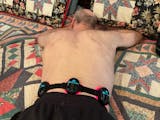Optimizing Recovery: The Role of Laser Therapy in Post-Stroke Rehabilitation
Individuals frequently face a wide range of complications following a stroke, such as shoulder pain, dysfunction in the paralyzed arm, and hand swelling. It is of utmost importance to address these challenges in order to facilitate recovery and improve the overall quality of life. The objective of this study was to investigate the effectiveness of LASER therapy in alleviating symptoms after a stroke and enhancing rehabilitation outcomes. The researchers aimed to compare the effects of LASER therapy with traditional electrotherapy modalities.
A total of seventy individuals who had suffered from strokes and were currently dealing with shoulder pain and hand edema were selected to participate in this study. The participants received treatment at the Clinic for Physical Medicine and Rehabilitation in Tuzla during the period of 2006 to 2007. The subjects were divided into two groups: the experimental group (EG) received LASER therapy, while the control group (CG) underwent electrotherapy. In addition to these treatments, both groups also underwent kinesis therapy and ice massage as part of their rehabilitation program.
Patients underwent evaluations using a range of outcome assessments both upon admission and at the time of discharge. These measures encompassed the Visual Analog Scale (VAS) to gauge pain levels, the Disabilities of the Arm, Shoulder, and Hand (DASH) questionnaire, the Barthel Index, and the Functional Independence Measure (FIM).
The findings of the study revealed notable advancements in the reduction of pain intensity and swelling among individuals who received LASER therapy, in contrast to those who underwent electrotherapy. Moreover, LASER therapy exhibited a stronger correlation with improvements in functional independence, as indicated by higher scores on the Barthel Index and increased levels of independency on the FIM assessment.
Significantly enhanced arm and hand function in the experimental group (EG) was observed through notable improvements in DASH scores following LASER therapy. The results highlight the promising potential of LASER therapy as an effective supplementary approach in post-stroke rehabilitation, demonstrating superior benefits in pain relief, swelling reduction, and overall functional recovery.
The advantages of LASER therapy in stroke rehabilitation are becoming more apparent as research progresses, highlighting its potential to enhance recovery and enhance the quality of life for those who have suffered a stroke. Integrating LASER therapy into holistic rehabilitation plans can enable stroke survivors to make significant strides towards independence and overall well-being.
















Share:
Optimizing Healing: Low-Level Laser Therapy for Wrist and Hand Bone Fractures
The Impact of Low-Intensity Laser Therapy on Muscle Performance in Spastic Hemiparetic Patients